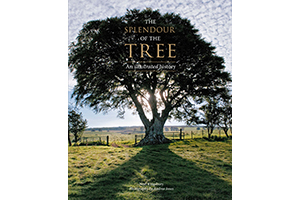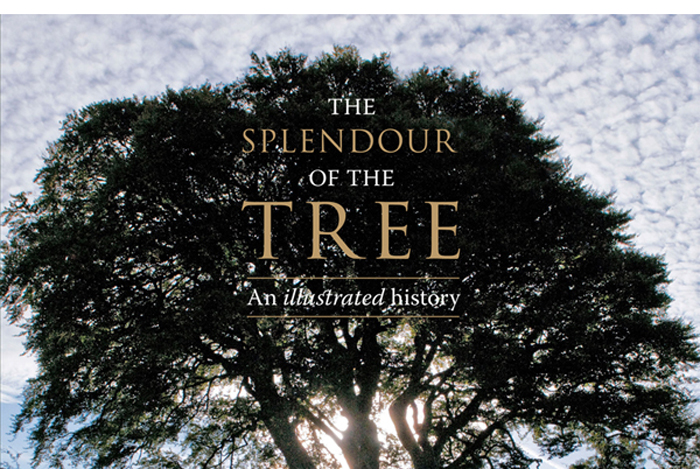The Splendour of the Tree – An illustrated History
I have been known to hug trees – there is something about their shape and form, their welcome, their place in our world. Trees are fundamental to life on Earth and to our environment as they are an inevitable part of the landscape in which we live.
In his new book ‘The Splendour of the Tree – an illustrated history’, Dr Noel Kingsbury celebrates the wonder, mystery, beauty and utility of the tree. In this beautiful coffee-table sized book, Dr Kingsbury pays homage to 100 key species of tree, chosen for their cultural, economic or historical significance and their importance in the natural world.
The author divides the trees between six chapters – Antiquity, Ecology, Sacred, Utility, Food and Ornament. Each tree is given its own section containing essential information as to origin, age and size, climate etc. However, what makes this book stand out from other reference works on trees is the fact that the author brings a very personal perspective of each tree to life both through his writing style and the range of information he includes. He analyses the particular characteristics of each tree and the specific role it plays within the ecosystem and the human environment. Nor does the author neglect to mention the challenges facing trees in the modern world and their important role in our food chain.
Within the pages of this book you will find many old favourites such as the Holly, Magnolia, California Redwood, Oak, Alder and Norway Spruce. The Holly (Ilex Aquifolium), which the author explains has worked its way into the consciousness of English-Speaking peoples all over the world and dominates the Christmas scene. We learn how it was traditionally used as an alternative to palms in Germany and how, once established, it can form thickets ideal for bird nesting.
The English Oak (Quercus robur and Quercus petraea), in fact dominant across vast areas of Europe, has forever sealed itself in our hearts as a particularly English tree. It is no surprise that the author includes the story of Charles II and his connection with the tree, but perhaps what we didn’t know is the tree’s importance in the building of the English navy and its significance in Germany where it is a symbol for national strength.
The photography of Andrea Jones, one of the world’s foremost garden photographers, is superb. She skillfully captures the nuances of every featured tree from exquisite close-up details to impeccable orchards in bloom.
 In the Introduction, Dr Kingsbury points out that trees are an essential part of our sense of place, whether urban or rural. They are an essential part of our learning to be good stewards on earth and he hopes that this book will contribute a little to that learning process. I am sure it will. For my part I have really enjoyed reading ‘The Splendour of the Tree’, it is a book I will doubtless be dipping in and out of many times in the future.
In the Introduction, Dr Kingsbury points out that trees are an essential part of our sense of place, whether urban or rural. They are an essential part of our learning to be good stewards on earth and he hopes that this book will contribute a little to that learning process. I am sure it will. For my part I have really enjoyed reading ‘The Splendour of the Tree’, it is a book I will doubtless be dipping in and out of many times in the future.
Included in the book is a useful time-line showing the oldest living examples of individual species of tree as well as a detailed further reading list.
Dr Noel Kingsbury is recognized internationally as a leading innovator in horticulture and landscape and is the author of several publications. His main areas of interest and expertise are nature-inspired planting design and the application of plant ecology to landscape design and management.
Andrea Jones has illustrated a number of highly regarded books as well as carrying out assignments for magazines and newspapers including BBC Gardeners; World, House & Garden and Guardian Weekend.
In reading the ‘Splendour of the Tree’ I have come to appreciate that we very much take trees for granted and how important they are to our ecology, lifestyle and well-being. Noel Kingsbury has provided us with a comprehensive reference and a stunning visual experience which not only celebrates the beauty and diversity of trees, he also brings their souls to life.
‘The Splendour of the Tree – An illustrated history’ by Dr Noel Kingsbury, is published by Frances Lincoln – www.franceslincoln.com – in hardback at £25.00.


